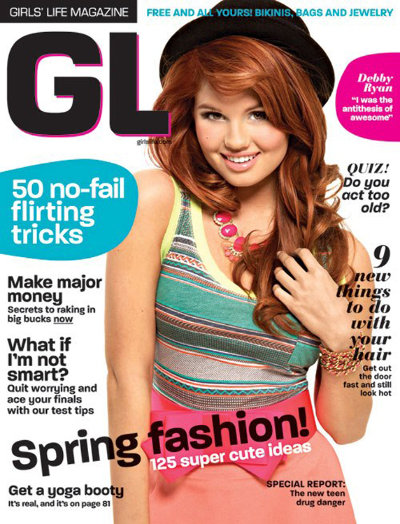A Short Introduction into the World of Media: An Overview of the Current Trends
Feminism is over. There are no ways to go back to the initial idea of feminism, which were extremely radical in their nature and aimed at too many issues at the same time. However, with the advent of new era, with its ideas of democracy, new technological advances and new social roles for men and women to perform, new ideas concerning the perception of women in the society emerged. Intertwined with other popular trends in the new mass media, both the new feminist concepts and their chauvinistic antipodes have come into the light, giving much food for thought.
Male feminism. Weirdly enough, the idea of female liberation has also started gaining support among men. Paradoxically enough, in the world where sexism is no more something out of the ordinary, more men accept feminist ideas. Perhaps, the given phenomenon takes place due to a less radical approach and less uncompromising goals of post-feminist (Genz, 2006).
Post-feminism. One of the most ambiguous phenomena of the epoch, post-feminism is not easy to define. Spawned by the attempts to revive the mid-90ies feminist movement, the given phenomenon can be defined by the term “equality.” However, the true meaning of the term is still obscure, which must be the reason for its inefficiency in the XXI century. As Holmlund put it, “Periodically promoted in magazines, debated on talk shows, and paraded in newspapers, “chick” postfeminism entails a backlash against or a dismissal of the desirability for equality between women and men, in the workforce and in the family” (Holmlund, 2005, 116).
Mass consumption. The susceptibility of the target audience to everything that media throws at them, mass consumption leads to drastic effects, Manovich (2009) claims.
Chauvinist Internet memes. Though they might seem funny at first, Internet memes like Women’s logic or Women serve their purpose to destroy a positive image of an independent and intelligent woman (Klos, 2013).


Commodity feminism. Another disturbing phenomenon, commodity feminism means that feminism is used for the purposes other than feminism itself, mostly commercial purposes (Gill, 2012).
Children sexualization. By far the most controversial aspect of the negative effects of consumerism is the lowering of the age of girls being introduced to the stereotypical image of a sexual icon and encouraging them to follow the given stereotype without questioning its reasonability or the meaning behind it.
According to the recent reports, “This century has witnessed the intensification of a trend that situates children as innocent victims of a pernicious adult desire” (Faulkner, 2010, 106). The given phenomenon can be partially attributed to the rise in consumerism rates:
The depiction in magazines and on television of children adopting apparently ‘coquettish’ postures, the wearing of make-up or adult-looking clothes, and the products marketed to children are all identified as signs of the decline of childhood innocence per se, as children increasingly are captured by popular culture as objects of desire and as consumers (Faulkner, 2010, 106). However, there is no need to conduct a study to see the current trends of child sexualization in modern media – it is enough to watch a child beauty pageant, see a commercial of child cosmetics, or read a teenage magazine (Karaian, 2012).
Because of the increased emphasis on sexuality before a person reaches the age of legal consent and, therefore, is able to realize what messages such media conveys to the younger audience, it can be expected that, growing up into young men and women, these children will subconsciously accept the chauvinistic idea of a woman, refusing the feminist idea of equality for good and reducing the social role of women to an oversexualized stereotype (Gannon, 2010).
Sexualization Gets a Grip of the Younger Audience
The alarming issue of child sexuality exploitation has not come out of nowhere, though. A result of the disappointment in the feminist ideas and the following surge of chauvinism, the given phenomenon has been fuelled greatly by the idea of proto-sexuality.
Thesis statement: because of the rapid downfall of feminism under the pressure of media sexualization and the confused goals of the new era feminism, the modern media is directed towards sexualizaton and exploiting the image of a woman as a dependent person lacking intelligence and pursuing the career that is based solely on her youth and look and, therefore, offering stereotypical role models for even younger audience and setting the course for young and teenage girls to grow into a chauvinist representation of an ideal woman.
Women in Modern Media: Whom Girls Want to be When They Grow up
As it has been mentioned previously, the specifics of post-feminism is the fact that it coexists with the idea of consumerism; as a result, what used to be women empowerment finally turns into another attempt to view women as a merchandise:
The depiction in magazines and on television of children adopting apparently ‘coquettish’ postures, the wearing of make-up or adult-looking clothes, and the products marketed to children are all identified as signs of the decline of childhood innocence per se, as children increasingly are captured by popular culture as objects of desire and as consumers. (Faulkner, 2010, 106).
Therefore, the current trends that make women dress their children like older girls do and give them make-up that makes young girls loom older are as dangerous to the children as they are to the society in general. The society forgets the idea of a strong and independent woman and learns the new image of a self-centered girl who obviously lacks competence in anything beyond the field of modern pop music and has a personality of a hairspray can.
Frail Attempts to Make a Statement vs. the Time-Honored Traditions: Proactive Female Characters
To the credit of the media that does not use the stereotypical portrayal of women to its advantage and does not try to cash in on the child sexuality, it must be mentioned that there are sources of popular media that have not succumbed to portraying younger women and children as sexual objects.
Tending to focus on the traditional female qualities, such as compassion, friendliness and diligence, they also incorporate such features as leadership skills, personality development and creativity. However, for each “American Girl” with its originality and progress (American Girl, n. d.) there is a “Girl’s Life” (Girl’s Life, n. d.) with its shallowness and chauvinist image of a young women as a sexual object in the first place.


The same problem concerns the TV shows and movies, which are a very powerful media as well. While there are the shows that discourage pursuing shallow values of a consumerist society, there will always be such shows as child beauty pageants, which feature young girls dressed the way a much older female audience usually is and wearing makeup, which looks completely unnatural.
Changing the Despicable State of Affairs: Concerning the Recently Created Female Images
Though there is no doubt that the values of the modern society are in peril, there are still the ways to prevent the catastrophe from happening. To start with, a positive image of a persistent and, hence, successful and independent business lady must be encouraged. Though the idea of a caring mother seems innocent enough, it is important to speak to the little girls’ need to develop their personalities beyond the shallow values that modern media imposes on them.
Later on, the given image of a confident woman must be marketed to the younger female audience through various lines of popular toys (e.g., a surgeon Barbie/any other popular doll), shows (e.g., an educational show led by a female character), cartoons (e.g., a cartoon in which the lead character is female and whose responsibilities stretch beyond the current stereotypes, such as a female superhero, etc.).
Predicting the Obvious Obstacles: What the Modern Female Stereotype is Fueled by
One of the questions that people probably ask most often regarding the current stereotype of a woman is, why choosing this very image to promote. One might argue, of course, that the idea of a humble housewife who is always behind the back of her chauvinist husband is not the best role model, either. However, in contrast to the current ideal, a housewife at least has motherly qualities and, therefore, is sympathetic and ready to help. The key attribute of a glamorous girl, on the contrary, is her egotistic nature and the focus on her own interests.
Therefore, the current female stereotype seems more like a backlash to the initial feminist idea, with the exception of such traits as being hardworking, independent and striving for her own personal, professional and spiritual development. An epitome of shallowness is the result. And, since a shallow person is easier to control, it can be assumed that the promoted role model for girls and young women is the result of the chauvinist trends in the society.
However, by far the most controversial reason for the phenomenon of sexualization to occur among younger audience is the effect of the unhealthy and even criminal inclinations of some of the people who shape the modern mass media. As Faulkner explains, “This century has witnessed the intensification of a trend that situates children as innocent victims of a pernicious adult desire” (Faulkner, 2010, 106).
Of course, calling all the people who supervise and control modern child show business pedophiles will be quite a stretch; however, the tendency in engaging younger women and girls into the realm of show business, where they are valued solely for their looks, is rather suspicious.
Conclusion: Modern Media as a Powerful Tool for Shaping Young Peoples’ Mind
While it is hard to deny that the current trends in depicting younger girls as much older femmes with their mind set solely on shallow interests are persistent, there are ways to fight the power of the modern media. Promoting the image of a successful, independent and intelligent woman, one can reinvent younger audience’s perception of what a woman can do and what she can become.
Reference List
American Girl (n. d.). A JPG file. Web.
Faulkner, J. (2010). The innocence fetish: The commodification and sexualization of children in the media and popular culture. Media International Australia, 135, 106–117.
Genz, S. (2006). Third way/ve: The politics of postfeminism. Feminist Theory, 7(3), 333–353.
Girl’s Life (n. d.). A JPG file. Web.
Gannon, S. (2010). Julia the Hottie and “You Go, Girl”: Role models for girls and young women? Outskirts: Feminisms along the Edge, 23(1), n/a.
Klos, D. M. The status of women in the U. S. media 2013. Women’s Media Center. Web.
Holmlund, C. (2005). Postfeminism from A to G. Cinema Journal, 44(2), 116– 121.
Gill, R. (2012). Empowerment/sexism: Figuring female sexual agency in contemporary advertising. Feminism Psychology, 18(1), 23–60.
Karaian, L. (2012). Lolita speaks: Sexting, teenage girls and the law. Crime Media Culture, 8(1), 57–73.
Manovich, L. (2009). The practice of everyday (media) life: From mass consumption to mass cultural production? Critical Inquiry, 35(2), 319–331.